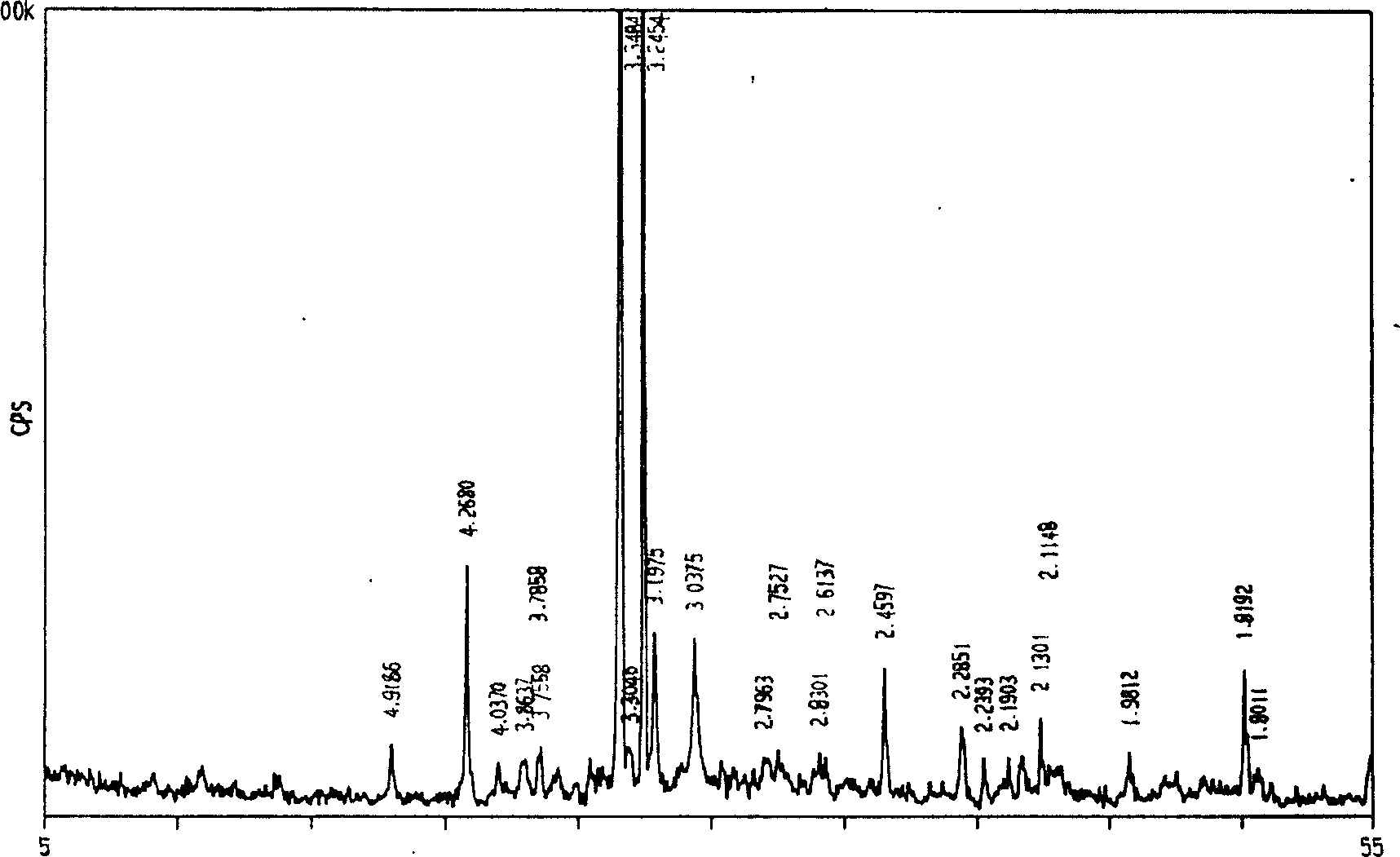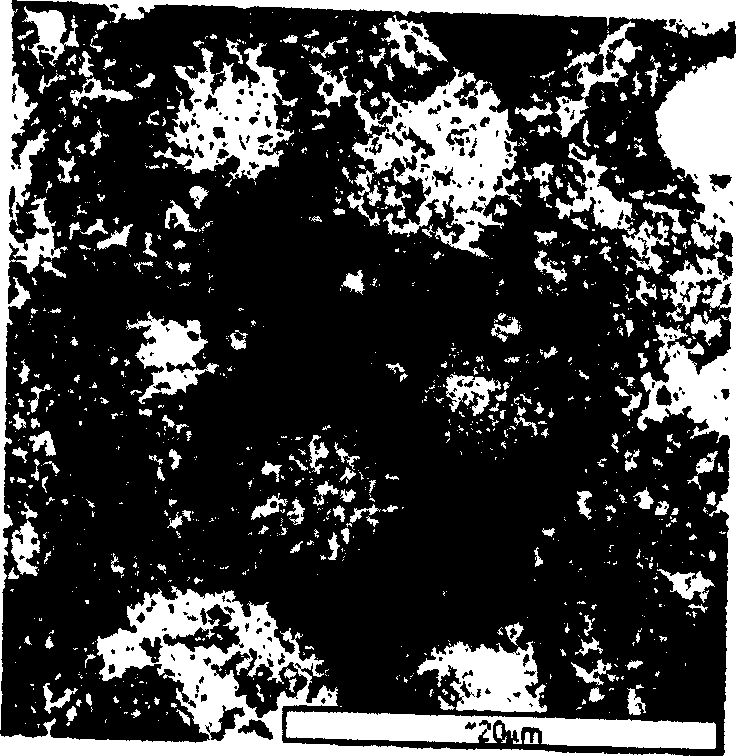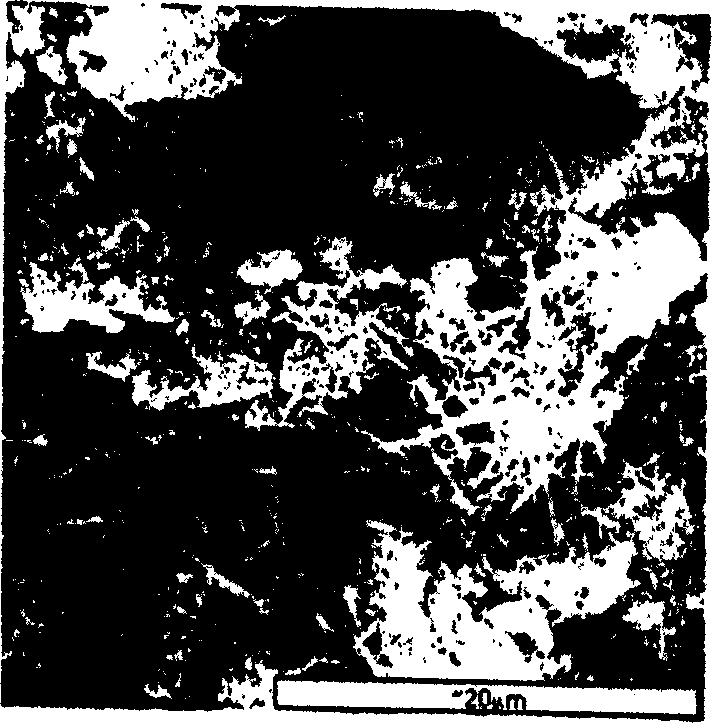Floor tile made of oil field sludge and its production process
A technology for oilfield sludge and production methods, applied in sludge treatment, chemical instruments and methods, water/sludge/sewage treatment, etc., can solve the problem that the solidification strength cannot meet the requirements of building bricks, and the alkalinity radioactivity test is not enough Problems such as conforming to building material standards and failing to meet ecological building materials
- Summary
- Abstract
- Description
- Claims
- Application Information
AI Technical Summary
Problems solved by technology
Method used
Image
Examples
Embodiment 1
[0061] The ratio of raw materials in this embodiment is 30% of oilfield sludge, 40% of river sand, 26% of cement, and 4% of curing agent.
[0062] Wherein, the curing agent is mixed with the raw materials in the following weight ratio:
[0063] Sulfoaluminate: 22% Calcium Stearate: 5%
[0064] Calcium Chloride: 20% Calcium Acetate: 0
[0065] Fluorite: 0 Gelatin: 5%
[0067] Acrylic resin 0
[0068] Core material: 10%
[0069] CaO
[0070] The production method is:
[0071] a) Colored cement is used for the color surface, and it is fully mixed with white gravel at a ratio of 1:2.5,
[0072] The gray ratio is 0.5, add water and stir evenly to make a slurry; inject the slurry into the mold with a thickness of 1-2cm, put
[0073] set for half an hour;
[0074] b) Mix the above-mentioned oilfield sludge, river sand, cement, fly ash, and curing agent evenly, and note
[0075] Put it into the above-mentioned mold, vibrate on th...
Embodiment 2
[0081] The raw material ratio of the matrix in this embodiment is 40% of oilfield sludge, 20% of river sand, 20% of cement, 19% of fly ash, and 2% of curing agent.
[0082] Wherein, the curing agent is mixed with the raw materials in the following weight ratio:
[0083] Sulfoaluminate: 15% Calcium Stearate: 2%
[0084] Calcium Chloride: 10% Calcium Acetate: 15%
[0085] Fluorite: 10% Gelatin: 9%
[0087] Acrylic 4%
[0088] The production method is the same as in Example 1, and the floor tiles are made.
[0089] The performance test results are: the average compressive strength is 22.28, the water absorption rate is 7.34%, and the bulk density is 1.96g / cm 3 . Its mechanical properties can still meet the relevant national standards. Other properties are substantially the same as in Example 1.
Embodiment 3
[0091] The ratio of raw materials in this embodiment is 55% of oilfield sludge, 20% of river sand, 18% of cement, and 7% of curing agent.
[0092] Wherein, the proportioning of curing agent is:
[0093] Sulfoaluminate: 20% Calcium Stearate: 5%
[0094] Calcium Chloride: 15% Calcium Acetate: 10%
[0095] Fluorite: 0 Gelatin: 5%
[0097] Acrylic resin 0 Monoethylene glycol 5%
[0098] Sucrose 5%
[0099] Core material: 10%
[0100] Wherein the core material is made up of the following raw materials in weight percentage:
[0101] CaO MgO Fe 2 o 3 SiO 2 al 2 o 3 al 2 (SO4) 4 Na 2 CO 3 FeSO4 MgSO4
[0102] 5 5 6 15 12 20 20 7 10
[0103] The production method is the same as in Example 1, and floor tiles are obtained.
[0104] The performance test results are: the average compressive strength is 28.28, the water absorption rate is 7.24%, and the bulk density is 1.96g / cm 3 . Its mechanical properties can still meet the relev...
PUM
| Property | Measurement | Unit |
|---|---|---|
| Density | aaaaa | aaaaa |
Abstract
Description
Claims
Application Information
 Login to View More
Login to View More - R&D
- Intellectual Property
- Life Sciences
- Materials
- Tech Scout
- Unparalleled Data Quality
- Higher Quality Content
- 60% Fewer Hallucinations
Browse by: Latest US Patents, China's latest patents, Technical Efficacy Thesaurus, Application Domain, Technology Topic, Popular Technical Reports.
© 2025 PatSnap. All rights reserved.Legal|Privacy policy|Modern Slavery Act Transparency Statement|Sitemap|About US| Contact US: help@patsnap.com



